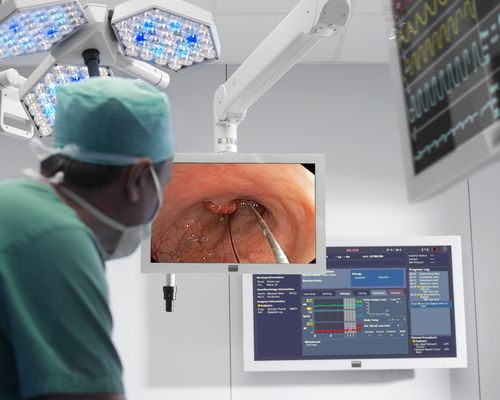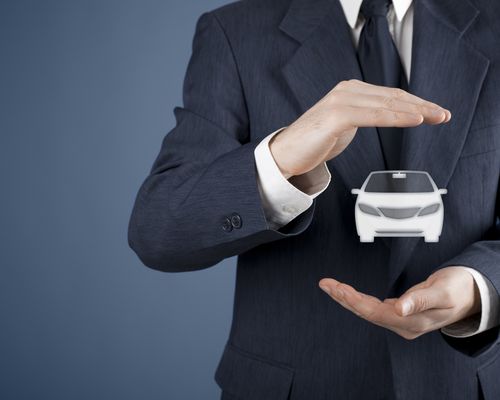CO-SUMMIT 2015: event round-up
The seventh and final instalment of the popular Co-summit event series was held in the heart of European industrial powerhouse Germany’s capital city on 10-11 March 2015. With fascinating ARTEMIS and ITEA projects showcased and high-level speakers and guests in attendance, the conference highlighted Europe’s edge in smart industry and discussed how to capitalise upon it.
With the theme ‘Smart Industry: Impact of Software Innovation’, Co-summit 2015 – supported by the German Federal Ministry of Education and Research, Daimler and Siemens – centred on the revolutionary ideas and exciting innovations Europe is generating towards a future in which manufacturing will be central to the success of the continent. Germany was the perfect place to host such a conference, not only due to its current impressive industrial credentials, but also because Germany is a thought leader in the field of industrial innovation.
The term ‘Industrie 4.0’ was first proposed at the Hannover Fair in 2011 as the result of deliberations between members of a German Government hi-tech strategy working group aiming to promote the digitalisation of the manufacturing industry. Smart industry and Industrie 4.0 can be used interchangeably to refer to what many are now predicting will be the fourth industrial revolution. After the mechanisation of production using water and steam power, the introduction of mass manufacturing with electrification and the more recent digital revolution, the fourth industrial revolution is seen as the merging of the real and virtual worlds, using cyber-physical systems, software innovation and the Internet of Things to further automate production and optimise systems, technical processes and workflows for both economic and environmental gain.
SPEECHES
A range of speeches, discussions and demonstrations over the course of the two-day event offered a compelling case for the impact ITEA and ARTEMIS projects are having in the creation of industrial innovations. Dr-Ing Herbert Zeisel from the German Federal Ministry of Education and Research kicked off proceedings with his welcome speech in which he underlined how important smart industry innovation is to Germany’s continued success: “Smart industry is the hot topic in Germany today so Berlin couldn’t be a better choice for this Co-summit”. Next Khalil Rouhana, Director for Components and Systems in DG CONNECT, made an impassioned speech about the need for a digital single market and smart industry in Europe: “Our challenge: develop a common strategy for software with complementary implementation mechanisms. Let’s just do it!” Later, in her keynote address Dr Jutta Schneider, Director of eDrive & Software Technologies for Daimler, offered her take on the challenges posed by today’s software innovation landscape. Providing a vivid example of the complexity of modern software applications, Schneider explained that if the code behind the software in a 1995 S-class Mercedes was written down on paper and stacked up it would reach 3 m. The equivalent 2020 S-class’ code would be the height of the world’s tallest building, the Burj Khalifa – 829 m.
PANEL SESSIONS
This astounding growth is indicative of the increasing complexity those attempting to innovate in smart industry are having to grapple with. But complexity is an area in which Europe excels – a sentiment echoed in the panel sessions held on the second day of Co-summit 2015. “With systems knowledge, I think that Europe stands very strong,” enthused Kees van der Klauw, Senior Vice President of Philips Research. “But in terms of entrepreneurial speed, we have to improve.” Christian Hahner from Daimler agreed: “What the US does better is transferring their ideas to market. We should concentrate on where our strengths lie, which is in mastering complexity”.
What Europe needs to do beyond R&D&I was also a hot topic during these sessions. TNO’s Egbert-Jan Sol suggested there are other important elements to the evolutionary process revolutionising industry: “It is not simply software innovation but also business innovation and social innovation”. Importantly, Tomas Lagerberg of ABB posed the question: “We have all these big data and connectivity but it is important to ask what’s in it for me, how can I make money out of it? We have to demonstrate the benefits to people”.
SPEAKERS CORNER
In a more intimate setting in the basement of the congress centre, speakers corners offered specific insights into smart industry trends and challenges, as well as a forum to debate topical issues. Presentations ranged from the future of automated driving with a focus on secure connectivity and the enabling role of cyber-physical systems to the internationalisation of European funding programmes, particularly in regard to ITEA. Key debates included how an industrial internet and future automation systems will impact industry and whether mHealth solutions can improve patients’ autonomy and quality of life through greater self-management.
International Innovation’s Ben Skuse also presented a session targeted at early-career researchers and new ITEA and ARTEMIS-IA projects, offering advice on how to use SEO, new media and alternative dissemination resources to improve the discoverability and impact of their research.
EXHIBITION
Complementing the smart industry-focused discussions in the panel sessions and speakers corners was an exhibition displaying the impacts from some of the most cutting-edge ITEA, ARTEMIS-IA and other European projects in the field. In total, 91 projects were on show. Of particular note was Daimler’s booth, which featured a preview of the new S-Class’s innovative safety, assistance and lighting systems through its ‘Moving Base’ driving simulator – offering a real taste of what the new car is capable of and also highlighting the ever greater role of simulation in systems development. Further to this, Daimler brought along their latest B-class electric vehicle for conference attendees to test drive on the streets of Berlin.
Other highlights from the floor included Exhibition Award winners R5-COP, who brought along an autonomous robot – designed for menial, dirty and dangerous jobs – which wandered around the exhibition floor whilst playing Kraftwerk, and the BaaS project, whose representatives wore hardhats and hazard warning vests to draw attention to the use of novel value-added services and applications for smart commercial buildings.
ARTEMIS PROJECTS
Arrowhead
The vision of Arrowhead is to enable collaborative automation through the Arrowhead Framework, fostering interoperability at device service level. The Arrowhead Framework is applied to multiple application areas within smart production, smart buildings, smart energy and electromobility – all in response to EU societal challenges.
Partners: 78
Duration: March 2013-March 2017
Investment: €67.7 million
Read more: www.arrowhead.eu
MC2
This project finds solutions for dynamic adaptability in open systems. It provides handling of mixed criticality multi-core applications in real-time conditions, with scalability and flexibility, full-scale deployment and management of integrated tool chains, through the entire lifecycle.
Partners: 100
Duration: April 2014-April 2017
Investment: €93.9 million
Read more: www.artemis-emc2.eu
R5-COP
With a focus on agile manufacturing paradigms and specifically on modular robotic systems, R5-COP supports model-based design, engineering, validation and fast commissioning using existing interface and middleware standards. The project will be a strong facilitator of the integration of components from various suppliers.
Partners: 30
Duration: February 2014-February 2017
Investment: €13 million
Read more: www.r5-cop.eu
ITEA PROJECTS
EASI-CLOUDS
Addressing the challenge of delivering on-demand services on top of any public or private cloud, EASI-CLOUDS delivers custom service-level agreements, automated provisioning and adaptation of virtual resources, as well as customised real-time billing. Its technology can be used to build a variety of business models, including cloud brokerage and federation.
Partners: 30
Duration: September 2011-March 2015
Investment: €23.1 million
Read more: http://easi-clouds.eu
SAFE
The SAFE project will speed up the efficient development of safety features in cars. The objective is to enhance, and make interoperable, methods for defining safety goals and define development processes complying with the new ISO26262 standard for functional safety in automotive electrical and electronic systems.
Partners: 18
Duration: July 2011-December 2014
Investment: €11.1 million
Read more: www.safe-project.eu
MEDIATE
The aim of this project was to support healthcare professionals in the transition from invasive, open surgery to minimally invasive, image-guided intervention and treatment through the full integration of all medical imaging sources and therapeutic devices into an interventional workflow including optimised user interfaces and decision support.
Partners: 27
Duration: September 2010-December 2013
Investment: €43.6 million
Read more: http://mediate-project.com
Related projects
MEDIATE
Patient Friendly Medical Intervention
EASI-CLOUDS
Extendable Architecture and Service Infrastructure for Cloud-Aware Software
SAFE
Safe Automotive soFtware architEcture




